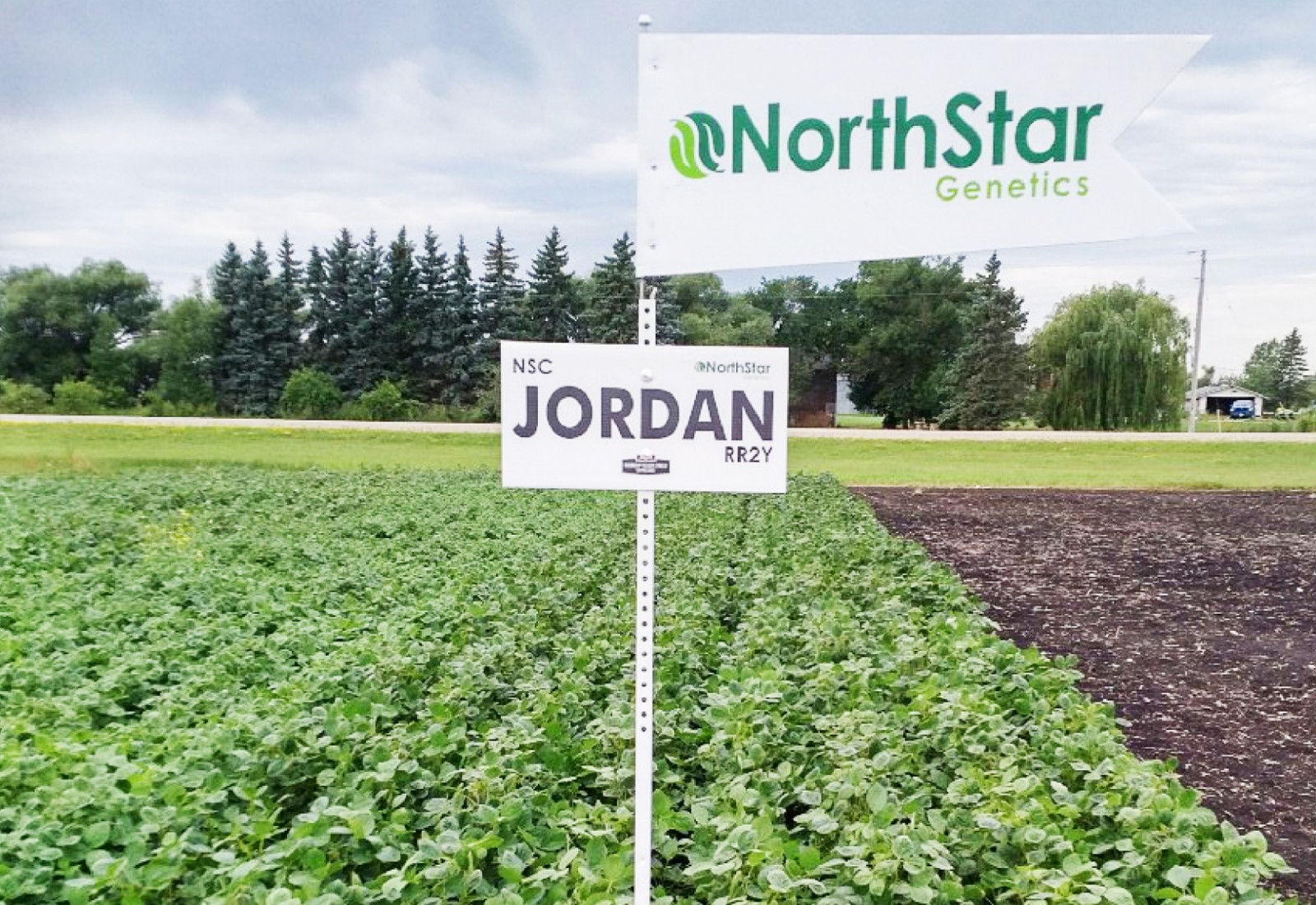New NorthStar Genetics Varieties for 2018

By John Dietz
What are the new soybean varieties that NorthStar has to offer for 2018? What stands out about these varieties?
Two mid- to long-season soybean varieties are being released this fall from NorthStar Genetics for the 2018 growing season. One is a Roundup Ready 2 Yield® soybean, and one is a Roundup Ready 2 Xtend® soybean.
The new lines join two popular Roundup Ready 2 Xtend® varieties released by NorthStar for 2017, and probably will be followed in 2019 by at least one more Roundup Ready 2 Xtend® variety, says Claude Durand, NorthStar Genetics product development manager.
For Durand, these new varieties are the fruit of evaluating hundreds of soybean lines with the Roundup Ready 2 Xtend® trait over the past five years.
NSC Riverside RR2X
The earlier of the two soybeans for 2018 is NSC Riverside RR2X. It is rated as 2475 CHU and as 00.7 on the relative maturity scale.
“It’s a nice, tall Roundup Ready 2 Xtend® variety that has very high yield potential and that stands very well,” Durand says. “It probably yields a little higher than NSC Richer RR2Y and may be a day or two earlier. We look at it as a potential NSC Richer RR2Y replacement.”
Compared to NSC Richer RR2Y, NSC Riverside RR2X has similar resistance to iron chlorosis and probably stands a little better. Under stress, it does very well. When white mould is an issue, NSC Riverside RR2X will show good to very good tolerance.
NSC Jordan RR2Y
The second new NorthStar Genetics soybean for 2018 is NSC Jordan RR2Y. It is rated as 2525 CHU and as 00.9 on the relative maturity scale. It is a medium-bush type soybean with tall plant height that will do well in 15- to 30-inch row spacing.
NSC Jordan RR2Y’s key strength is its exceptional yield potential in the long season zone, with yields up to 9 percent more than NSC Richer RR2Y in 2016 trials.
“We see this variety as being a nice fit for growers looking to maximize yield potential by pushing their maturity range,” says Durand.
NSC Jordan RR2Y has a good disease package, as well. Compared to NSC Richer RR2Y soybeans, the NSC Jordan RR2Y variety is equal or better for iron chlorosis, with much better tolerance to white mould. It also shows very good field tolerance to phytophthora root rot with the Rps1c gene.
“The standability and white mould tolerance are what really stood out in the field in last year’s conditions,” adds Durand. “We see it as a popular choice for growers who have liked our older long season varieties such as NSC Osborne RR2Y and NSC Arnaud RR2Y.”
Seed supply
Seed in limited supply will be available this fall from NorthStar Genetics dealers for the new lines in eastern Manitoba, says Durand.
“There probably will be more of the NSC Jordan RR2Y available than the NSC Riverside RR2X, but anybody who wants to try them out probably should be able to access a little bit.”
Seed orders are best placed in October and November. Sales of the best varieties “are cooking” in November, shortly after the harvest is in the bins. By February, seed remains available but the choices are fewer.
Durand was talking with soybean growers in Saskatchewan in mid-July. Growers with the new short-season Roundup Ready 2 Xtend® varieties from NorthStar were happy, but others settled for longer-season varieties because the early lines were sold out, and they really wanted to grow soybeans.
“The early varieties were all gone, so they had to settle for longer-season stuff; that’s a little riskier. They need a full season for those (other) varieties. If frost comes a little early in September or if cool nights in July slow things down a little, they can still get a harvest but lose yield potential,” Durand says.
Looking ahead
Soybean seed options from NorthStar Genetics are changing throughout the maturity spectrum, with the introduction of four new varieties in 2017 (NSC Leroy RR2Y, NSC StarCity RR2X, NSC Austin RR2Y, and NSC Starbuck RR2X), along with the addition of these two for 2018.
“This is the last year for NSC Tilston RR2Y and NSC Anola RR2Y, which have done very well for us,” Durand added. “Anola was our early variety five years ago; now, compared to our current varieties, Anola is almost a mid-season product.”
Next out of the genetic pipeline, if all goes well, will be more soybean options for Alberta and Saskatchewan.
“Cooler nights can be a problem, but we’ve found some genetics that seem to tolerate cool nights,” Durand says. “We have a variety unnamed right now that probably will be launched on a fairly large scale in 2019. It is an erect, tall, early- to mid-season soybean with excellent standability. It may have some cold tolerance, and it seems to recover faster from a mid-summer night when the temperature dips below eight degrees.”


